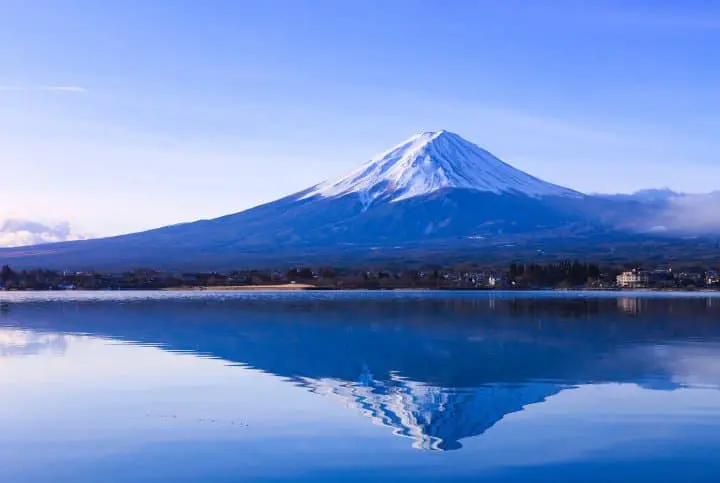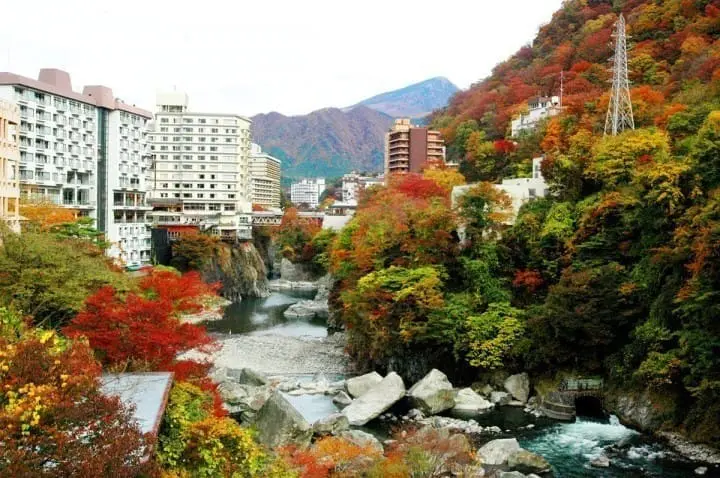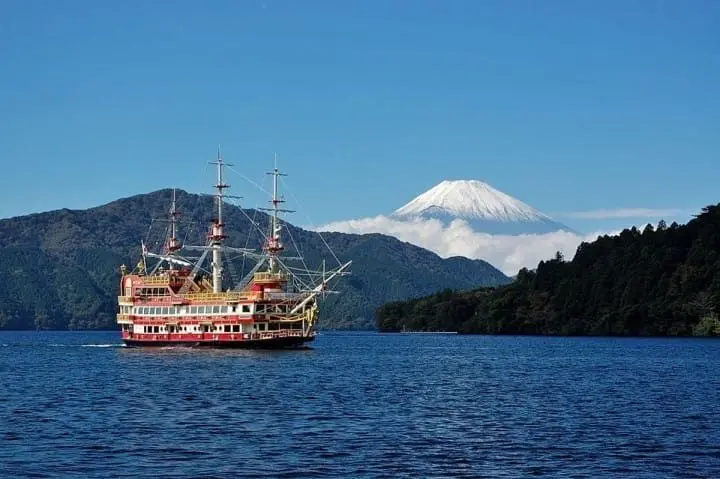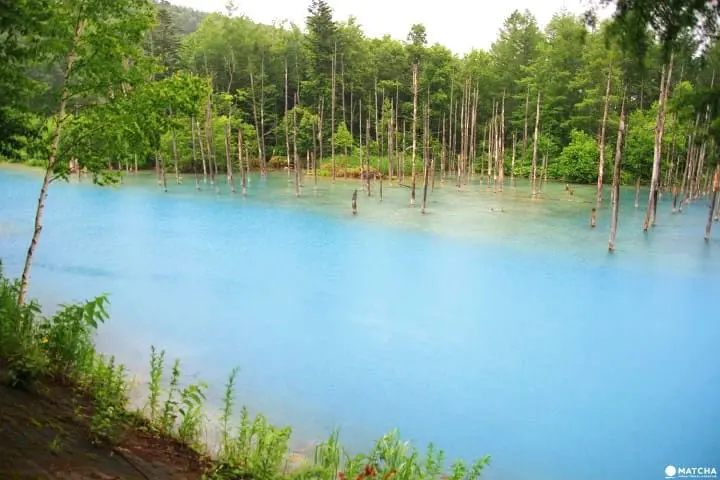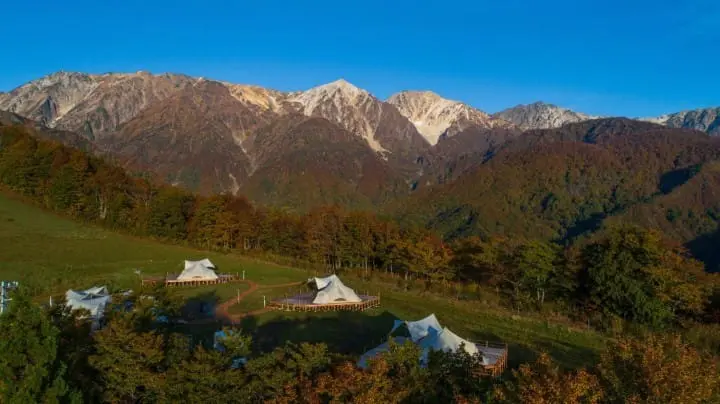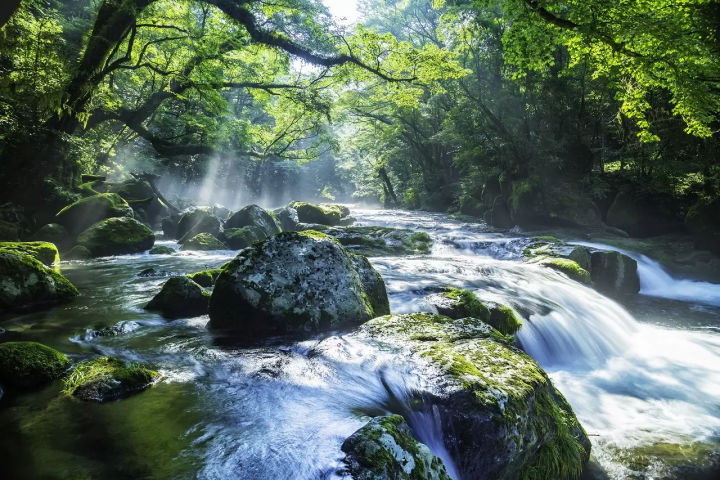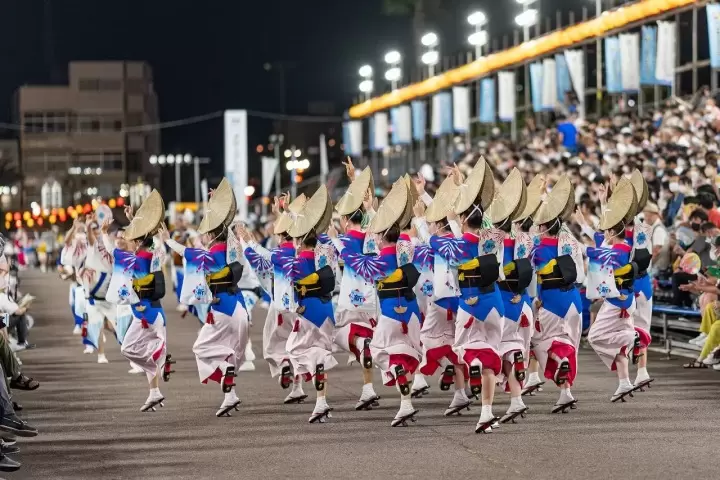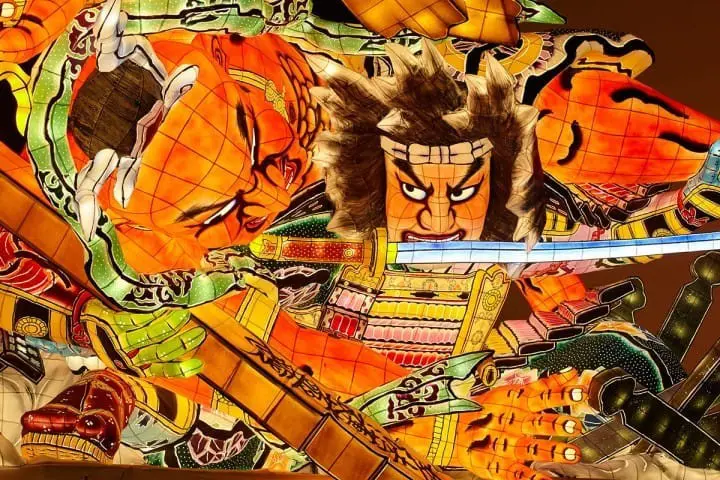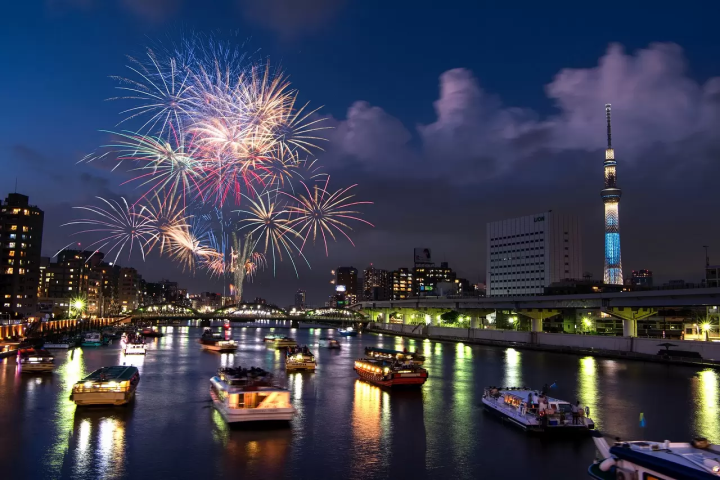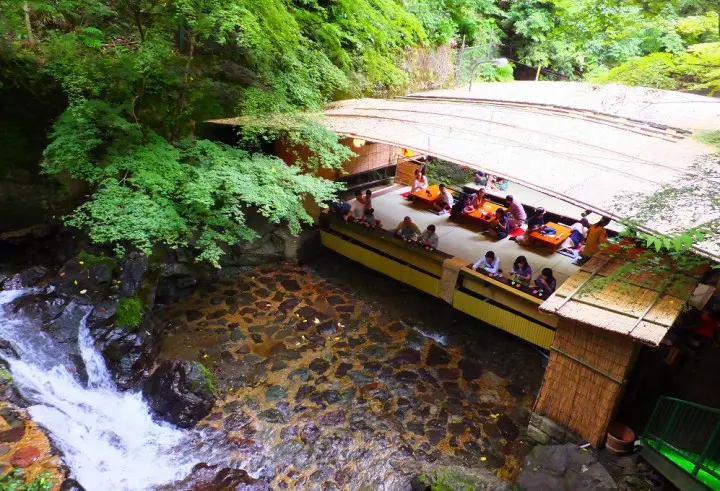Start planning your trip


Summer in Japan is from June to August. The heat can be extreme but there are ways to remain cool and make the most of this hot period. We introduce the weather, the best summer destinations, festivals and activities, and tips on how to enjoy this season.
Summer in Japan lasts from June to August and is usually a very hot season, with extreme humidity levels and daytime temperatures often higher than 30℃ (86°F), especially in Tokyo, Kyoto, Osaka, and other metropolitan areas.
If you're planning a summer trip to Japan, it is strongly recommended to head to destinations located in the mountains or in other cooler regions. Nikko, Karuizawa, Hakone, Nagano's Hakuba area, Hokkaido, and areas in northern Japan are the best summer destinations.
Summer in Japan is associated with lively traditional festivals, fireworks, summer foods such as somen noodles and kakigori (shave ice desserts ), and yukata (summer kimonos).
In this article, we introduce summer weather in Japan, recommended summer clothing items, recommended summer activities and destinations, along with tips on how to stay cool.
Summer Temperatures and Weather in Japan
Recommended Summer Clothing in Japan
Top 7 Summer Destinations in Japan
1. Mt. Fuji
2. Nikko
3. Karuizawa
4. Hakone
5. Hokkaido
6. Hakuba (Nagano)
7. Kikuchi Gorge (Kumamoto)
Japanese Beaches and the Swimming Season
Summer Festivals and Fireworks
Japanese Summer Cuisine
Summer in Japan is hot and humid. The season usually begins in June and lasts through August. For visitors traveling from regions with more temperate weather, the heat and the humidity in Japan might be difficult to get used to, but with some planning and strategizing, it is possible to avoid the heat and discomfort.
In late June, in addition to the heat, the humidity level is very high as well. The end of June to early July is known as tsuyu, which is the rainy season in Japan. It is a time of constant rain and even typhoons. During this time, the average daytime temperature in Tokyo is about 22℃, or 71.6℉, and average rainfall is 167.7 mm.
Nevertheless, there are many activities and aspects of Japan that to be enjoyed exclusively during the rainy season, such as viewing the beautiful hydrangeas that bloom during this time throughout the country.
In recent years, summer temperatures have been particularly high, prompting news cautions for people to protect themselves from the heat to avoid heat-related illnesses such as heat strokes. On an average day in July, the temperature in Tokyo can reach highs of 35°C (95°F) in July and August. When outside, stay hydrated with water, wear lightweight clothing, and you bring a fan with you.
High humidity levels are also characteristic for Japanese summer weather, ranging from about 78% relative humidity to 83% relative humidity during July and August. Summer rains are also common, with intense and unpredictable bursts of sudden severe rainfall. It is recommended to carry around an umbrella at all times or have access to a potential shelter from the rain.
Photo by Pixta
Due to the danger of being affected by a heatstroke or heat illness, it is not recommended to spend long hours outside during the daytime.
It is the best time of the year, though, to visit museums and indoor facilities in the metropolitan areas, or to enjoy hiking and festivals outdoors at cool, mountainous areas. We introduce five of the best summer destinations in Japan further below in this article.
↑ Return to the top of article.
July and August are extremely humid and hot, so visitors are recommended to wear thin short-sleeved shirts, one-piece dresses, and clothing with breathable fabric, like cotton. In areas with little shade, it is also advisable to wear a hat with a brim to protect against ultraviolet light and sunburn.
It is important to note that when visiting Shinto shrines and Buddhist temples, you shouldn't wear sleeveless tops or clothing that reveals certain areas of the body. If you plan to make an excursion to a shrine or temple, bring along something to cover up your arms during the visit.
In addition, indoor air-conditioning can make trains, shops, and restaurants feel very cold in contrast to the outside heat, so it is also recommended to have a light jacket or a scarf to feel comfortable.
A view of Mt. Fuji
Mt. Fuji is a dream destination for many who come to Japan. The iconic, 3,776-meter (12,388 feet) mountain is open to climbers annually between July and September. With its international fame, the mountain trails are very crowded, especially on weekends and public holidays, so those interested in trying this challenge should prepare ahead of time.
For those looking to enjoy views of Mt. Fuji, areas like Hakone, Lake Kawaguchiko, and the Fuji Five Lakes region are excellent places to visit to take in the mountain from afar. These regions are popular sightseeing areas, with high-quality lodging options, entertainment, and delicious local specialties.
Take the Fuji Excursion limited express from Shinjuku Station to get to the base of the mountain and other nearby sightseeing regions directly from Tokyo. The comfortable ride takes around two hours.
Nikko is one of the most popular summer holiday destinations in Japan due to its rich, beautiful nature, history, and cool temperatures even during the hottest months. The city can be reached in about two hours by train from Tokyo.
Nikko might be best known as the home of World Heritage sites such as Nikko Toshogu, Rinnoji Temple and Nikko Futarasan Shrine. However, ever since the Meiji Period (1868-1912) when Imperial villas and diplomatic summer residences were built here, Nikko was a favorite summer resort spot for many people living in the Tokyo area and international visitors.
Nikko is a mountainous area, offering stunning scenery. Chuzenji Lake, the Kegon Falls, or the Senjogahara Wetlands are just some of the spectacular places that are a must-visit.
There are various types of hotels and ryokan (Japanese inns) in Nikko, with some of them boasting a history of over one hundred years such as Nikko Kanaya Hotel. The area is ideal for a relaxing summer vacation.
Karuizawa, located in Nagano, will be the first place mentioned by a Japanese person when asked about the ideal summer destination.
Located at a high altitude and surrounded by lush forests, the nature-filled Karuizawa is considerably cooler than the metropolitan areas in summer. Enjoy Karuizawa by hiking around the famous Shiraito Falls and Kumoba Pond and shopping at Karuizawa Prince Shopping Plaza.
In addition to its scenic spots, Karuizawa boasts excellent hot springs that can be enjoyed all around the year. Visitors can enjoy soaking in an onsen during a cool summer night.
After a trip to Karuizawa, you'll feel refreshed, full of vigor, and relaxed, ready to deal with everyday life again.
Hakone is an excellent resort area for those who wish to enjoy nature, hot springs, and art. There are many art museums and galleries in the area, not to mention the artistically designed Japanese inns that welcome guests with the utmost hospitality. Hakone is accessible from Tokyo in about 2 hours: take the Odakyu Romancecar from Shinjuku Station for a comfortable, quick ride.
The forests and the mountains make Hakone considerably cooler than Tokyo. The best way to enjoy a summer holiday in Hakone is by visiting its excellent art museums, taking part in cruises on Lake Ashi, and enjoying hot springs and delicious local food.
Hokkaido, the northernmost prefecture of Japan, is ideal for a summer trip. In addition to the splendid nature that one can experience in Furano, Biei or Akan, Hokkaido also boasts beautiful urban areas such as Sapporo, Hakodate or Asahikawa.
Hakodate, for instance, has a long history as a port city. Many buildings with architecture that is rarely seen in Japan can be found here. The city's nightscape has even ranked first as the most beautiful night view in Japan.
Summer is the season when the world-famous lavender fields of Tomita Farm are in bloom. Check the article below for information on access and other points of interest in Hokkaido.
Hakuba, in Nagano, might be best known as one of the major ski resorts in the Japanese Alps. However, during summer, it is a cool, lush green paradise with splendid views of the alpine peaks. Hakuba is accessible via Shinkansen and train from Tokyo in around 4 hours, making it a destination worth spending a few days at.
Summer in Hakuba is a season where many domestic and international travelers travel here to enjoy hiking, biking, swimming, and a wide range of other outdoor activities. The area has a rich flora, with rare plants and flowers that are specific to the Alps.
Glamping is an increasingly popular activity in Hakuba. If you wish to enjoy a leisurely stay in the heart of nature, Hakuba might be the best choice.
Photo by Pixta
Located within Aso Kuju National Park, Kikuchi Gorge (Kikuchi Keikoku) spans 4 kilometers and serves as a serene trekking destination. The gorge offers a peaceful ambiance with a blend of cascading waterfalls and calm, meandering stretches of water. Visitors can explore this emerald-green paradise by using the walkways and paths in the park.
The Kikuchi Gorge maintains a refreshing summer average water temperature of 13 degrees, making it the perfect seasonal escape.
The valley resounds with the gentle flow of the river and the melodies of chirping birds, inviting dream-like reveries. Whether it's the vibrant hues of autumn leaves mirrored in the stream or the lush greenery of spring and summer, the Kikuchi Gorge captivates visitors, offering a soothing retreat for all.
Please note that the Kikuchi Gorge is closed in the winter months. The gorge can be accessed only from March until November 30.
Kikuchi Gorge website: https://kumamoto.guide/en/spots/detail/12009
↑ Return to the top of article.
The swimming season in Japan usually starts at the end of June and lasts through August. Some of the famous beaches near Tokyo are Yuigahama in Kamakura and Onjuku Beach in Chiba, while Okinawa boasts some of the most beautiful beaches in Japan.
Due to extremely high summer temperatures in recent years, we recommend caution when spending long hours at the beach. Wear sunscreen, rest under a beach parasol, and drink large quantities of water.
One of the best ways to enjoy Japan's beaches in the summer is by visiting them early in the morning when the air is still relatively cool, or at dusk. The sunsets at beaches in Zushi, Enoshima, or Hayama are very beautiful.
Awa Odori Festival. Photo by Pixta
Japan is known for its vibrant and culturally rich festivals throughout the year, especially during the summer months. Some of the famous summer festivals in Japan include:
1. Gion Matsuri (Kyoto): One of Japan's most famous festivals, held in July in Kyoto. It features colorful processions of floats and traditional performances.
2. Tenjin Matsuri (Osaka): Held in July, this festival is one of Osaka's largest summer events featuring boat processions on the Dojima River and fireworks displays.
3. Awa Odori (Tokushima): Taking place in Tokushima in August, this festival is one of Japan's largest traditional dance festivals with participants dancing through the streets.
4. Nebuta Matsuri (Aomori): Held in Aomori in August, this festival is known for its spectacular illuminated floats depicting historical and mythical figures.
5. Firework Festivals: Various cities across Japan host impressive fireworks displays during the summer, including events in Tokyo, Yokohama, and Nagoya.
Photo by Pixta
6. Sumida River Fireworks Festival (Tokyo): One of Tokyo's biggest fireworks displays, held in late July, attracts millions of visitors along the Sumida River.
7. Sendai Tanabata Matsuri (Sendai): Celebrated in August, this festival features colorful decorations and paper streamers adorning the city streets.
8. Yosakoi Soran Festival (Hokkaido): Held in Sapporo in June, this festival features lively dance performances combining traditional and modern elements.
At each of these festivals, visitors can also try delicious traditional festival food and beverages, and wear traditional clothes such as yukata and jinbei.
These festivals showcase various aspects of Japanese culture, including traditional dance, music, food, and colorful decorations. Attending one of these summer festivals can provide a unique and immersive experience into Japan's rich cultural traditions and vibrant community celebrations.
↑ Return to the top of article.
Picture from Japanese Encyclopedia: Somen and Nagashi Somen
Due to the intense heat in the summer, Japanese cuisine during this season centers around chilled dishes utilizing fresh ingredients. Japan is well-known for its delicious kakigori, or shave ice, which is crushed ice flavored with sweet syrup or condensed milk.
Kakigori desserts are easy to find during the summer months, as is sold at festivals and appears on the menu of many restaurants. Other common sweet treats are seasonal fruits, including watermelon, peaches, and cherries.
Chilled noodle dishes are also essential during the summer. Well-known dishes include zaru soba , buckwheat noodles that are served cold with a light broth, and chilled somen, or thin wheat noodles, which come with fresh toppings and a cold dipping broth. Both meals are delicious, light, and suitable for the summertime.
Outdoor beer gardens are also held during the summer throughout Japan and are well-attended. Pricing and plans vary by location, but visitors usually pay a fixed fee for an all-you-can-drink plan within a certain time limit. Depending on the plan, food is also included and usually consists of food that is easy to eat, including edamame, french fries, and meat dishes.
In addition to beer gardens, kawadoko, or outdoor patio seating built over a river bed, are offered by certain restaurants in Japan during the summer as well. The types of cuisine at these restaurants range from Japanese over Italian to American-style food.
Customers dining on the kawadoko can relax with the cool mist rising from the river while enjoying dining on delicious food. Kyoto is particularly well-known for its kawadoko.
↑ Return to the top of article.
Japan's average summer temperatures can vary by region due to the country's diverse climate. In general, Japan experiences hot and humid summers, particularly during the months of June to August. Here are some average summer temperatures for key cities in Japan:
1. In Tokyo, average summer temperatures typically range from about 25°C to 30°C (77°F to 86°F). However, temperatures can often exceed 30°C (86°F) during peak summer months.
2. In Kyoto, average summer temperatures range from approximately 26°C to 32°C (79°F to 90°F). Like Tokyo, temperatures can rise above 30°C (86°F) during the hottest days.
3. Osaka experiences similar summer temperatures to Kyoto, with averages ranging between 26°C to 32°C (79°F to 90°F).
4. Being in the northern part of Japan, Sapporo has more moderate summer temperatures compared to central and southern regions. Average temperatures during summer in Sapporo range from about 20°C to 25°C (68°F to 77°F).
5. Okinawa, located further south and closer to the tropics, experiences hotter and more humid summers. Average temperatures in Okinawa during summer can range from approximately 28°C to 32°C (82°F to 90°F) or higher.
These temperature ranges provide a general idea of what to expect during the summer months in different parts of Japan. It's important to note that temperatures can vary year to year, and extreme heatwaves are not uncommon during the peak of summer.
Embark on a diverse summer journey in Japan with this itinerary: Begin in Tokyo (Days 1-4) for city exploration and amusement parks. Transition to Kyoto (Days 5-7) to delve into historical sites and the serene beauty of Nara. Next, discover Hiroshima and Miyajima (Days 8-9), exploring its poignant memorials and iconic sights. Move to Osaka and Nara (Days 10-12) for culinary delights, nature hikes, and entertainment at Universal Studios Japan. Conclude in Okinawa (Days 13-15) for beach relaxation, water activities, village exploration, and local cuisine. This itinerary blends urban vibrancy, cultural immersion, and natural splendor for an unforgettable Japanese summer adventure.
Please make sure to include destinations with a lot of greenery and refreshing waterscapes. On very hot days, please refrain from walking in the sun and opt for visiting indoor facilities.
Summer in Japan offers a mix of vibrant festivals, warm weather for outdoor activities, seasonal delicacies, and the chance to experience family-friendly events. However, it also brings challenges like heat, humidity, rainy seasons in certain regions, crowds at popular destinations, and mosquito presence in rural areas. When visiting Japan in summer, staying hydrated, wearing light clothing, planning accommodations in advance, and using sun protection are essential.
Whether summer is ideal for your trip depends on how you handle the weather and crowds. If you appreciate cultural festivities, warm temperatures, and seasonal cuisine, summer presents a great opportunity to immerse yourself in Japan's diverse landscapes and rich traditions.
For a comfortable summer in Japan, prioritize lightweight, breathable clothing like cotton or linen. Opt for loose-fitting outfits to aid air circulation, wear sun protection including hats and sunscreen, and choose sandals or sneakers for footwear. Be culturally respectful by avoiding overly revealing attire in traditional areas. Carry a light jacket for cooler evenings and stay hydrated throughout the day.
Prepare for sudden rain showers by carrying a compact umbrella. When dressing for Japan's hot and humid weather, aim for comfort and practicality while embracing local customs. Enjoy your summer travels with these tips!
Traveling in Japan during the summer is a great opportunity to experience the Japanese culture related to this season such as fireworks, festivals, and delicious food. While the heat and the weather conditions during this time of the year require paying more attention to physical well-being, summertime is a special season in Japan that can be truly enjoyable.
Main image: Kikuchi Gorge. Photo by Pixta
Written by
The MATCHA editorial department. Our articles feature useful travel information for visitors to Japan, from how-to guides to recommended places to visit.




